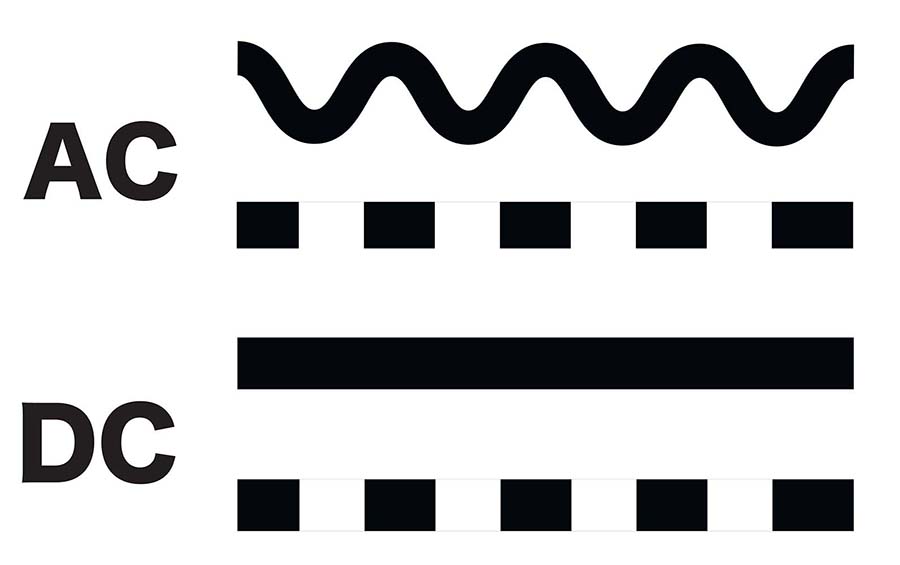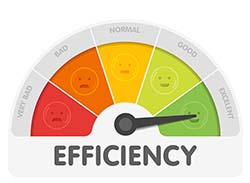AC vs DC Ceiling Fans
With the evolution in technology, we have seen many industries improve designs of products such as Computers, Cars, LED lights and now with Ceiling Fans. DC motors have been slowly introduced into ceiling fans as technology improves and designs have become viable to do so. As a result, we find most new ceiling fan designs incorporating this technology and using DC motors.
So what is the difference between AC and DC motors?

To answer, we will have to get technical. AC motors use alternating current (AC) to power the motor of the ceiling fan which comes straight from our local power supplier. To control an AC ceiling fan, the power needs to be regulated through a speed control device. Most fans typically use a capacitor which is located behind the dial in your switch plate, or in the receiver of the remote.
DC ceiling fans use direct current (DC) to power the motor of the ceiling fan. This is done through an AC to DC converter that is included internally in the ceiling fan and converts the standard AC power to DC and control, the fan at a much lower voltage.
What are the advantages of using DC Ceiling Fans?
1. Energy Efficiency and Cost to operate:

DC ceiling fans will typically come with 35w motors and have a power breakdown of 35w/22w/14w/8.5w/5.5w depending on the speed setting being used.
AC ceiling fans will typically come with 70w motors and have a power breakdown of 70w/30w/15w depending on the speed setting being used.
Ceiling fans are generally used on the highest or lowest speed settings meaning DC ceiling fans will save an average of 70% on the power consumption used.
2. Quiet operation:

One of the most popular reasons to purchase a DC ceiling fan is their ability to generate little to no sound from the motor compared to a traditional AC ceiling fan. DC ceiling fans may begin with an initial sound to get started, but once moving, there is a constant low voltage being applied to operate the fan and with the minimal electromagnetic interference, they run incredibly smooth. Whereas AC ceiling fans have to constantly alternate their frequency and as a result, you will hear small sounds of the motor turning on, then off several times a minute. AC ceiling fans create more electromagnetic interference which results in the motor having to run harder and overtime this leads to more noise being created.
3. Reliability
All lights2you ceiling fans come with extended warranties, some now up to 6 years, but ideally you would want your ceiling fan to last 10-15 years. As explained previously, DC ceiling fans run with lower voltages and minimal electromagnetic interference, meaning they have a much more reliable operation. AC ceiling fans run off higher voltages and are controlled through small capacitors that have high tendencies to break down within 10 years. This is commonly experienced when one of the three speed settings stops working and is a result of the capacitor beginning to fail.
4. Functionality
DC ceiling fans come with various speed options. Lights2you typical models can come with 5 to 6 speed settings, some even having 7 speed settings. Comparing this to AC ceiling fans which only come with the basic 3 speed settings.
DC ceiling fans will also have the summer/winter (forward/reverse) option on the remote supplied, whereas AC ceiling fans require a manual button that must be located on the physical motor to reverse the direction.
Some DC ceiling fans also come with Sea Breeze technology, this being the setting that allows the fan to fluctuate with different speed settings that create a lovely wind breeze effect. Not currently available to AC model ceiling fans.
Both AC and DC models can have timer functions for their ceiling fans however it is more commonly supplied with DC ceiling fans making them complete with all the functionality.
5. Ceiling Fan Designs
DC ceiling fans use smaller/compact DC motors as opposed to larger/bulkier AC motors and as a result, DC ceiling fans have more sleek/modern body designs. The modern body designs combined with the latest blade material composites result in very elegant ceiling fan designs that are not possible with AC ceiling fans.
What are the disadvantages of using DC Ceiling Fans?
There are no real disadvantages of using DC ceiling fans, all aspects of using the DC fans are positive. The only complaint about DC ceiling fans is their relatively higher cost to purchase compared to AC ceiling fans, however once the advantages are explained, complaints turn into complements.
The cost of DC ceiling fans are constantly decreasing as more and more designs are introduced into the ceiling fan market. The check out the Lights2you DC ceiling fan range, please click on the link below.

